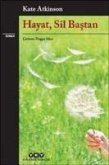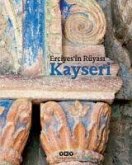With a chapter by J. Crow and contributions by O. Özel, A.C.S. Peacock, A. Saunders, and W.M. Thackston, Jr. This book reintroduces and reexamines the Seljuk inscriptions from the walls of Sinop citadel. First published at the beginning of the last century, these inscriptions open a window onto scribal, administrative, and architectural practice during an important, formative period of the Seljuk sultanate in the early thirteenth century. 16 inscriptions of Sinop citadel, all made within a five month period in the summer of 1215, allow us a glimpse of the Seljuk elite at work, with aspirations and ideals of state and office mixing and competing with individual and factional rivalries and administrative changes. This book corrects previous published versions, and offers for the first time a reading of the main sultanic inscription, which has been chiselled out. Contributors analyze the Persian verse inscription, the first of its kind from Seljuk Anatolia, and the only known Seljuk bilingual Arabic-Greek inscription. In addition to an in-depth rereading and analysis of these inscriptions, this book examines their architectural context. This includes the first signed work of Abu Ali al-Halabi, the Syrian military architect who served the Seljuk state, and who later built the well-known Red Tower in Alanya. This book provides a new analysis not only of Seljuk architectural practice based on architectural and inscriptional evidence, it also reevaluates the architecture of the citadel itself. Sinop citadel, one of the most impressive in medieval Anatolia, is redated to the Byzantine era.
Hinweis: Dieser Artikel kann nur an eine deutsche Lieferadresse ausgeliefert werden.
Hinweis: Dieser Artikel kann nur an eine deutsche Lieferadresse ausgeliefert werden.








